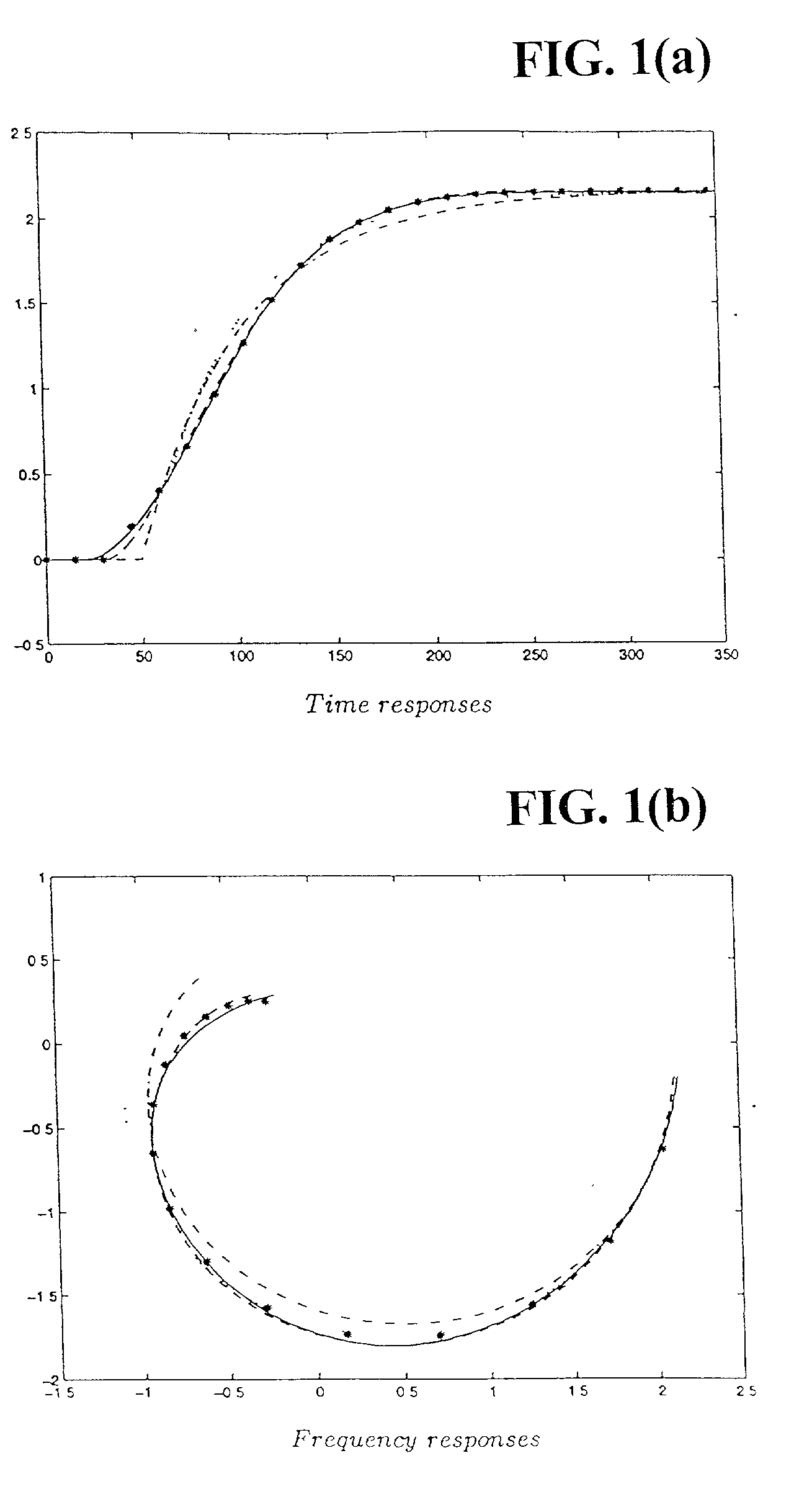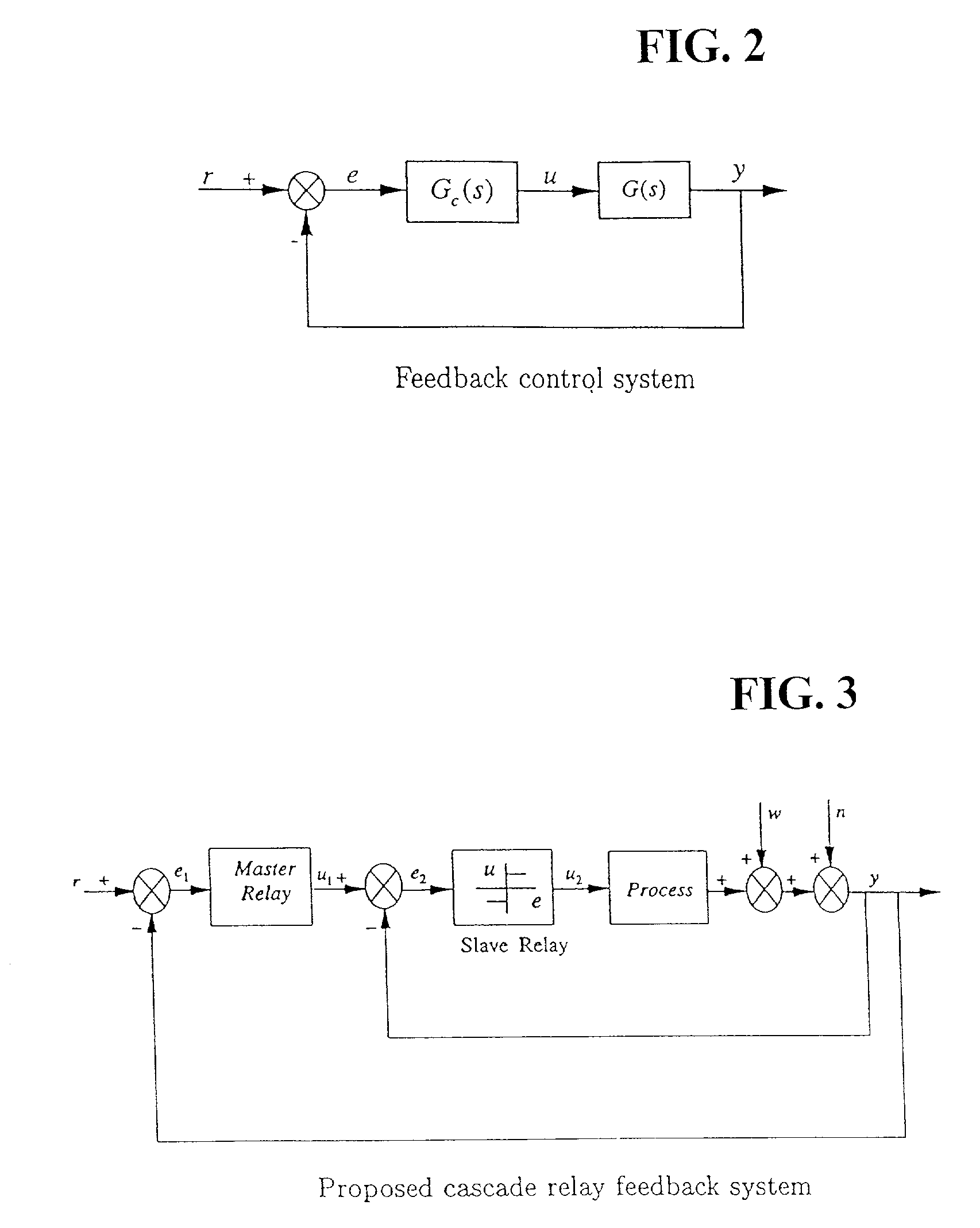Robust process identification and auto-tuning control
a process identification and auto-tuning control technology, applied in the direction of electric controllers, pulse characteristics measurements, instruments, etc., can solve the problems of non-minimum phase system robustness to noise, inability to robustly describe graphical methods, and inability to identify plant models in closed-loop operation
- Summary
- Abstract
- Description
- Claims
- Application Information
AI Technical Summary
Benefits of technology
Problems solved by technology
Method used
Image
Examples
case 3
oop (sequential) relay test;
Case 4: Closed-loop (sequential) relay test. (55)
[0255] It should be stressed that the identification method to be presented below is not restricted to these four cases only, but also applicable to other cases provided that each test leads to a steady state.
[0256] To unify the presentation for all the cases, we introduce a vector .upsilon.(t): 96 v ( t ) = { u ( t ) , open -loop test , r ( t ) , closed - loop test ,
[0257] where u(t) is the input to plant and r(t) the set-point to the closed-loop of FIG. 2. Let 1(t) and .gamma.(t) be the step function with unity size and the relay function with unity magnitude, respectively. The types of test signal are reflected by the elements of .upsilon.(t): 97 v i( t ) = { i 1 ( t ) , step , i ( t )1 ( t ) , relay , ( 56 )
[0258] where .alpha..sub.i and .beta..sub.i are the size and amplitude of the step and relay, respectively. Then the m tests .upsilon..sup.i in a sequential experiment over the time span of [t.sub.0,...
example
[0440] Consider a first-order plus dead-time process 189 G ( s ) = - 5 s 10 s + 1
[0441] The PI controller design method proposed in Zhuang and Atherton (1993) is applied to give 190 G c( s ) = 1.01 + 1.01 s
[0442] For the scheme in FIG. 27, suppose (s)=G(s). In V(s), take .tau..sub..upsilon.=0.4L=2, calculate from (112) the maximum value of K.sub..upsilon. as K.sub..upsilon..sub..sub.max=1.38, then set K.sub..upsilon.=K.sub..upsilon..sub..sub.max3=0.46. We have 191 V ( s ) = 0.45 2 s + 1
[0443] The filter Q(s) is in the form of 192 Q ( s ) = 1 q s + 1,
[0444] and .tau..sub.q is chosen as {fraction (1 / 10)}T.sub.p=0.01. A unit step change in the set-point is made at t=0, and a step disturbance of the size 1 is introduced through 193 G d( s ) = 1 20 s + 1
[0445] to the system at t=50, the resulting responses are displayed in FIG. 30, where the solid line is from the proposed method, and the dashed line is from the normal feedback control without any disturbance compensator.
[0446] To evalua...
PUM
 Login to View More
Login to View More Abstract
Description
Claims
Application Information
 Login to View More
Login to View More - R&D
- Intellectual Property
- Life Sciences
- Materials
- Tech Scout
- Unparalleled Data Quality
- Higher Quality Content
- 60% Fewer Hallucinations
Browse by: Latest US Patents, China's latest patents, Technical Efficacy Thesaurus, Application Domain, Technology Topic, Popular Technical Reports.
© 2025 PatSnap. All rights reserved.Legal|Privacy policy|Modern Slavery Act Transparency Statement|Sitemap|About US| Contact US: help@patsnap.com



